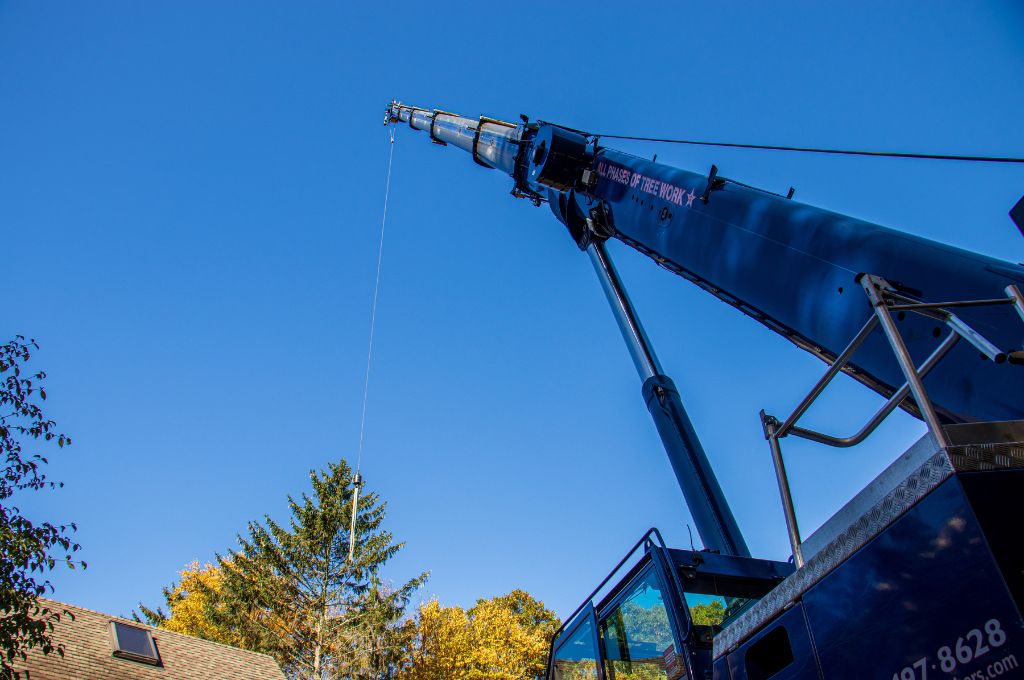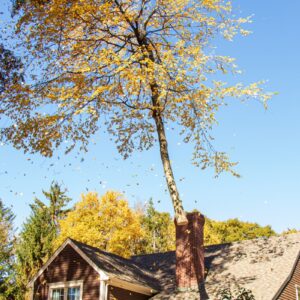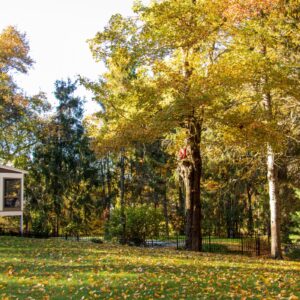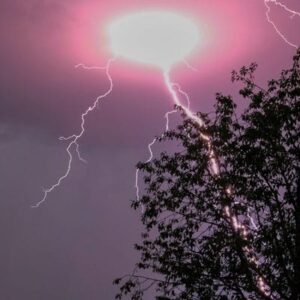Summer storms and nor’easters can wreak havoc on your property, leaving broken branches and uprooted trees scattered across your property. Once the weather clears, restoring your property requires quick action and expert care. Turning to a professional tree service for storm damage cleanup not only ensures a safer, more efficient process, but also spares you the risks of tackling the job on your own. Here are five benefits of leaving the cleanup to the experts.
Key Takeaways
- Cleanup can be risky with unstable branches, hidden stress in the wood, and slippery conditions – let the pros handle it safely.
- Certified Arborists can spot damage you might miss and give you honest advice on whether your trees can be saved or need removal.
- From cranes to woodchippers, tree care professionals have the equipment needed to get the job done quickly and safely.
- Letting a tree service handle the cleanup means you can focus on other urgent tasks, like dealing with insurance and property repairs.
- Regular pruning and removing hazardous trees now can save you from even bigger headaches the next time a storm rolls through.
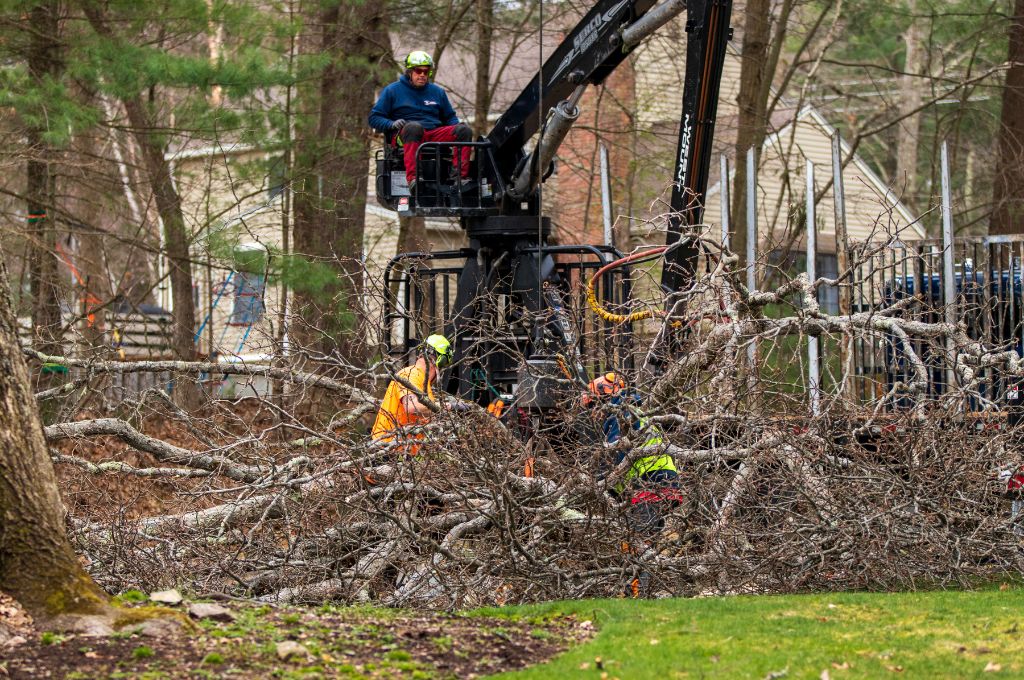
5 Benefits of Having a Professional Help with Tree Damage Cleanup
After a storm, there are plenty of headaches for MetroWest homeowners to deal with. One of them is how to take care of any tree damage cleanup they need. Nor’easters, summer storms, and high winds can cause tree damage in the MetroWest area, leaving you with figuring out how to clean it up.
Hiring a tree care company to handle storm damage cleanup is often the best choice. Trying to handle things yourself puts you in danger and also diverts your time and energy from other efforts to fix your property. Some of the benefits of hiring a professional to help with tree damage cleanup include:
1. Tree Removal Companies Are Faster and Safer
Safety is always a top priority after a storm. Tree removal is already dangerous enough, and removing a storm-damaged tree only adds to the risks with unstable branches, split trunks, and debris that can be unpredictable. Spend enough time in our industry, and you’ll hear several sad stories every year of someone removing or pruning trees and ending up with several injuries or even fatally injured.
Some of the dangers of removing or working with storm-damaged trees include:
- Working Near Power Lines: Removing a tree leaning near a power line is extremely hazardous. Electrocution can occur even within 10 feet of the line, and an unexpected branch movement could bring the tree or branch into direct contact with the power line.
- Leaning Trees: Trees leaning against another tree pose a dual danger. Cutting the leaning tree can cause the supporting tree – or its branches – to collapse unpredictably.
- Wood Under Tension: Storm-damaged trees are often under extreme stress. Wood under tension can snap or spring back unpredictably, causing serious injuries.
- Fallen Trees with Root Balls: Cutting a tree that’s fallen but still attached to its root ball can be deceptive. The tension in the roots can cause the tree to “jump” upright when cut, putting anyone nearby at risk.
- Root Ball Hazards: Cutting into a trunk attached to a root ball can release tension, causing the entire root ball to suddenly slam back into the ground, trapping or injuring anything in its path.
- Slippery Conditions: After a storm, wet and debris-covered ground makes chainsaw operation especially dangerous, increasing the risk of slips and falls.
- Chainsaw Kickback: Cutting branches on the ground can bury the chainsaw bar in dirt or hit hidden obstacles, causing kickbacks that can result in serious injuries.
If something goes wrong, reputable tree services always have the proper insurance coverage. This means you can rest assured that won’t be held liable in the event of an accident.
2. Experts Provide a Thorough Assessment of Your Tree Damage
Unless you’ve worked with trees professionally, assessing storm damage can be challenging. While it’s easy to spot a fallen tree or a large branch in your yard, identifying the full extent of the damage – especially subtle issues like cracks, stress points, or hidden canopy injuries – requires an expert eye.
Professional tree service teams are trained to evaluate storm-damaged trees thoroughly. They’ll assess the structural integrity, health, and safety risks of your trees, providing you with an honest recommendation on whether they can be saved or need removal. Their expertise ensures you make informed decisions about your property’s recovery.
3. Tree Services Have the Right Tools to Handle Storm Damage Cleanup
Do you have a plan on how you’ll remove and dispose of the large branches or parts of the tree in your yard? You might have a chainsaw available, but it can only do so much. Moving and disposing of heavy pieces safely is challenging without the proper equipment.
A tree service has all the necessary tools at their disposal to make the job easier and more efficient, such as:
- Cranes to lift cut pieces of the tree over obstacles
- Woodchippers to dispose of debris
- Trucks to carry larger pieces for disposal
- Personal protective equipment to protect workers
4. Professionals Free Up Your Time to Handle Other Priorities
If a fallen tree or branch damages your house or other structures, you’ve got more to worry about than some wood. You’ll likely want to be on the phone to speak with your insurance company and research the most efficient way to restore your property to its former condition.
If you decide to remove a tree yourself, you won’t have time to focus on other aspects that require your attention. Free up your time by letting the professionals handle the tree damage cleanup.
5. Certified Arborists Can Help Prevent Future Storm Damage
Preventing storm damage is always easier (and cheaper) than cleaning up afterward. When a Certified Arborist visits your property, they’ll take a close look at your trees and give you honest advice on how to protect them (and your home) from future storms.
Here’s what they might recommend:
- Pruning: If you’ve got branches that are dead, weak, or just too long, removing them can make a big difference. Pruning high-risk branches helps keep your property safer and reduces the chances of needing future tree damage cleanup after the next storm.
- Removal: Sometimes, the best way to protect your property is to remove a hazardous tree. It’s not an easy decision, but it’s the only way to guarantee a tree won’t cause problems down the road.
Frequently Asked Questions About Tree Damage Cleanup
Will my homeowners’ insurance cover tree removal after a storm?
It depends on the specifics of your insurance policy. Many homeowners’ insurance plans cover tree removal if the damage is caused by events like windstorms or other weather-related incidents. However, if the tree was already in poor condition before the storm – such as being dead, diseased, or otherwise hazardous – the damage might not be covered.
To avoid unexpected expenses, review your policy’s terms carefully and have a Certified Arborist inspect your trees regularly. Proactive maintenance can help address potential risks and ensure you’re not caught off guard when a storm hits.
What causes storm damage in MetroWest, Massachusetts?
Storm damage may occur in three primary ways in our area:
- High winds can quickly result in broken limbs, cracked bark, trunks, or knock trees to the ground entirely.
- Ice and snow build up on branches can lead to broken branches and limbs. Sometimes, the weight can snap off large sections of a tree or even topple it entirely.
- Overly saturated soil from heavy rainfall can cause trees to lean or uproot.
What are some typical signs of storm damage in trees?
Some of the signs you’ll want to look for when safely inspecting your trees for damage after a storm include:
- Broken or hanging branches
- Fallen limbs
- Cracks in the tree trunk or the branches
- Shredded, stripped, or peeling bark
- Loss of leaves
- Broken or loose cables or bracing
- Roots pulling out of the ground or appearing where they weren’t before
- Leaning tree
- Fallen, broken, or uprooted tree
Let American Climbers Handle Your Tree Damage Cleanup
Dealing with storm-damaged trees can be overwhelming, but you don’t have to do it alone. Whether it’s a fallen branch or a whole tree, prompt professional help can restore your property to its best condition safely and efficiently.
At American Climbers, we have the tools, experience, and expertise to handle even the toughest cleanup jobs. From removing hazardous debris to giving your yard a fresh start, we’re here to make the process seamless and stress-free. Call us today at 508-497-8628 or request a quote online to get started with your storm damage cleanup.
Blog Topics
Recent Posts
What's Happening? Stay Informed!
Stay on top of local events, pest and disease updates, tree and landscape tips, and more. Delivered straight to your inbox each month.

